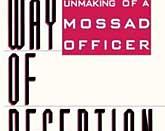Deception under the Theft Act 1968 Obtaining Property - s.15 TA 1968 Apart from the general elements of deception, an obtaining and dishonesty, the prosecution must also prove the following: a) that property has been obtained. 'Property' is given the same definition as in theft under s.4(1) by s.34 TA 1968. This means that the exclusions in ss.(2)(3) and (4) do not apply in deception cases - you can obtain land by deception.
b) that property must belong to another. Again by s.34, s.5(1) applies generally to deception offences and under s.15(2) obtaining property is obtaining ownership, possession or control of it. This covers the normal situation where D obtains the ownership or possession of the item from P who is the owner but (as in Turner), the defendant might himself be the owner of the goods and e.g. lie to the garage in order to get the car back.
Griew made the point that the requirement that the property belong to another could be an embarrasment with regard to 'things in action'. Davies (1981) where D stole a cheque drawn by P. and paid it into his own bank. D now has an enforceable right against the bank and was convicted of obtaining it by deception. But, argues Griew, although that right is property, it is a newly created right that has never belonged to P who never had any right of action against D's bank. Where the deception causes a right of action to come into existence for the first time, can anyone be said to have owned it previously. This point has now been taken by the House of Lords in Preddy where in the course of a mortgage fraud, a substantial deposit was made and thus a 'thing in action' was created at the defendant's bank...


